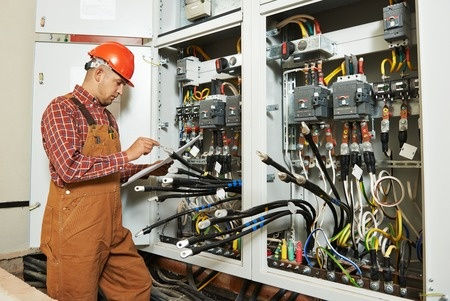Installation, Repair, and Maintenance
- Proper testing instruments should always be used. The hand or fingers should never be used to test for voltage.
- Fuses should not be bridged with unapproved conductors. Only use proper fuse pulling tools for replacing fuses.
- Electrical extension cords should not be spliced.
- Water should never be used for cleaning electrical equipment or devices.
- Electrical equipment should never be altered such that it changes the hazard rating.
- Power tools should be inspected for damage to cords or connections prior to each use.
- Electrical hand tools should never be used while the worker is standing in water or outside when wet or raining.
- Before attempting repairs, equipment should be properly lockout/tagged out and disconnected or checked to ensure the power source is off.
- Employees should never work on energized (live) electrical equipment.
- Metal ladders should not be used for electrical work.
- Electrical protective equipment should be used, including a dielectric hook, insulated rubber gloves, heat tempered face shield, and dielectric apron when working on high-voltage equipment (600v or greater).
- Only CO2 or powder type extinguishers should be used to respond to fires in any electrical equipment or areas.
Knowledge Check Choose the best answer for the question.
1-4. When is electrical protective equipment, including a dielectric hook, insulated rubber gloves, heat tempered face shield, and dielectric apron required?
You forgot to answer the question!

